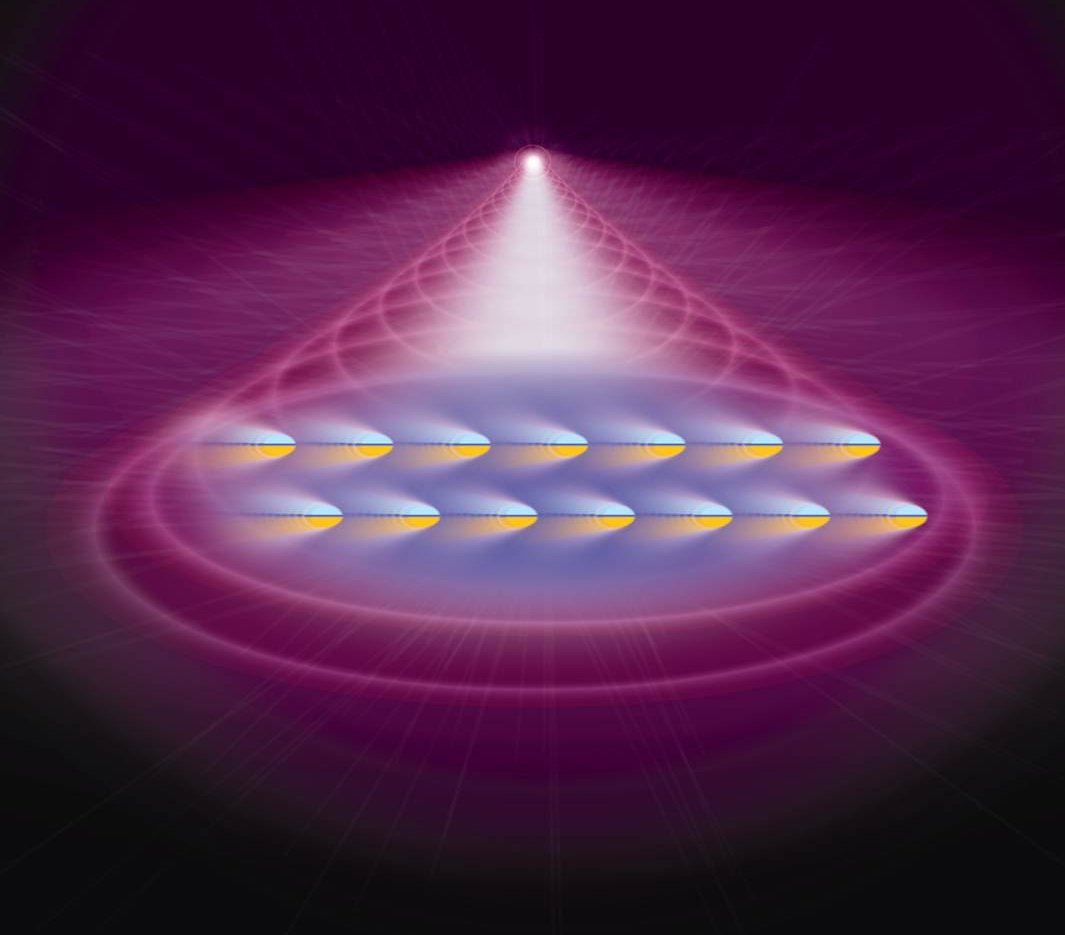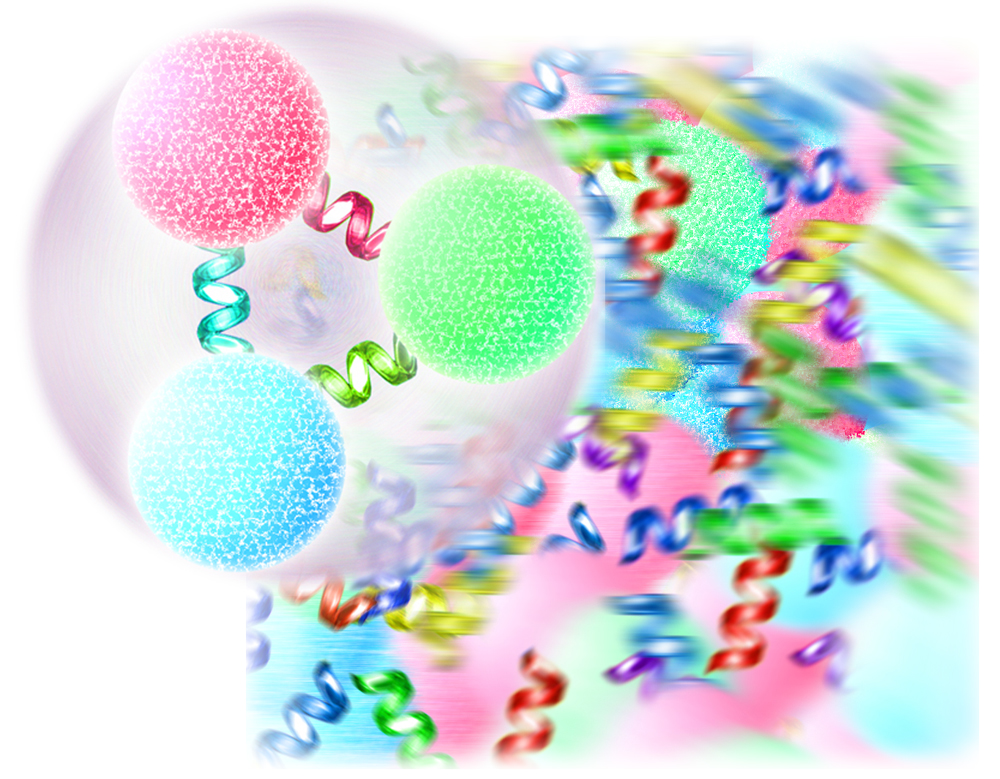
States of matter means different states or levels of a matter at a given temperature. The state of a matter varies with temperature. At a given temperature, a matter can change its states to various states.
In primary level, we learnt that there are three states of matter in the universe. Simply solid, liquid and gas. But besides these, there are many states of matters exist in the universe. Some other states of matters are glass, liquid crystal etc. Some of other states of matters exist only in extreme conditions. That is why they were not detected earlier. There are some other states of matter has been identified but those states of matters exist only theoretically. But first, we will discuss about the fundamental three matters.
1. Solid:
"Solid" is one of the three fundamental states of matters. The particles of solid states are so strong that they cannot move freely and hence tightly bound together. The solid particles have a very low kinetic energy and that's why they have a very low tendency to move. However, the particles move very slowly, so the atoms of solid have a small vibration. They have a definite volume and they do not change their shapes according to their containers. Solids are classified as the following ways-
Amorphous solid:
This type of solid particles do not have any definite orders. They occupy random positions forming amorphous solids.Crystalline solids:
This type of solid particles have their definite order. Their particles are packed together in the crystal lattice to form crystalline solids.2. Liquid:
"Liquid" is also one of the three fundamental states of matters. The particles of liquid substance have higher kinetic energy than those of the solids. They do not have definite and regular arrangement but they are so close that they can occupy a definite volume.
Liquids do not have any shape and they take the shape of the container. This happens because the particles of the liquid substance have enough space to flow around each other.
3. Gases:
The gas particles have a higher kinetic energy and it do not have any certain shape. That means, if it is not enclosed in any container then it will spread immediately in space. If it is enclosed in a certain container, then the particles of the gas will move randomly inside the container. Then, the spaces among the particles will be decreased and the pressure on the particles will be increased also the temperature. The gas particles have enough kinetic energy which helps them to overcome the intermolecular force among the particles. This is why, gases do not have any volume as well as shape of its own.
4. Plasma:
Plasma is not actually a common matter but it is the forth states of matter in the universe. It was first discovered by Irving Langmuir in 1920s. Plasma consists of highly charged particles and also has the very high kinetic energy. Plasma can be created from any neutral gas by two ways; either from a huge potential difference between two points or exposing on a very high temperature. After heating to a very high temperature, the electrons come out from the atoms of the gas. So, in plasma state, there are equal numbers of positive and negative ions; hence it is neutral.
Under normal condition, plasma state could not be achieved. Some good examples of plasma state are lightning, electrical sparks, fluorescent lights, neon lights etc. Even, the stars are nothing but huge balls of plasma.
5. Bose-Einstein Condensate:
This state was first predicted by Satyendra Nath Bose and Albert Einstein in 1924. It occurs in a very close to absolute zero condition. When a dilute gas of bosons is cooled to almost absolute zero, i.e -273.15 °C, then the matter enters in the state of Bose-Einstein Condensate.
In this extreme low temperature, the kinetic energy of the particles become almost zero and they come closer to each other and stops each other. In this state, there are not multiple number of atoms, rather it has one Super Atom. That means, in such extreme cold condition, it collapses to a single quantum state which can be described by a single uniform wave function.
In 1995, a research group of Eric Cornell and Carl Wieman of JILA (Joint Institute for Laboratory Astrophysics) at the University of Colorado performed the first successful experiment on BEC. By using a combination of lasers and magnets, they cooled a sample of Rubidium to almost absolute zero. At this extreme cold environment the matters enters in the state of Bose-Einstein Condensate.
6. Quark-Gluon Plasma:
To understand this, first we have to know about the quarks and gluon. According to particle physics, quarks are the smallest and fundamental particles of the universe. The nucleons (protons and neutrons are together called nucleons) are made of such quarks. There are different types of quarks; Up, Down Top, Charm and Strange. Gluons (they sticks like glue hence the name) are those elementary particles which acts like glue in the formation of protons and neutrons. For more information on quarks and gluons, check the article on Standard Model of Particle Physics.
When a liquid gets heated, we know that it turns into plasma. But what will happen when the plasma is again heated to an extreme temperature? After raising the temperature of the plasma substance, the nucleons are melt and the quarks are no longer stick together, because the gluons can no longer hold the quarks in this extreme temperature. Then a new matter is formed which is called the Quark-Gluon Plasma.
7. Degenerate Matter:
Degenerate Matter is a highly compressed state of matter which have very high kinetic energy to occupy the Pauli Exclusion Principle. According to Pauli Exclusion Principle, no two or more fermions can occupy the same quantum state of a quantum system simultaneously.
The term "Degenerate Matter" is mainly used in astrophysics to explain the stellar objects like white dwarfs, neutron stars etc where the gravitational force is so extreme that gravitational collapsing occurs by quantum mechanical effect.
Honourable mentions:
1. Exciton:
Exciton is a bound state of an electron and an electron hole which are attracted to each other due to the Coulomb force.
2. Photonic Molecules:
Photonic Molecules are some theoretical matters which can be made artificially in where protons are bound together to form "Molecules".
3. Fermionic Condensate:
It is similar to the Bose-Einstein condensate but made of fermions. It is actually a superfluid phase which is made of fermions at low temperature.
4. Superconductivity:
It is a phenomenon of certain materials which provide zero electrical resistance and expulsion of magnetic fields when cooled below a certain temperature.
5. Superfluid:
It is a property of some cryogenic liquids where, it can flow without any friction in extreme temperature conditions.
6. Supersolid:
It is a phenomenon of some rigid bodies where it can move without any friction, but it remains in solid state.
7. Time crystal:
Time crystal or space-time crystal is a structure which repeats in space and time. It has movements even at their low energy states. In normal three dimensional crystals, they have repeating pattern in space, but remains unchanged in time. But time crystals repeats their patterns in space as well as time.













0 Comments
Please do not enter any spam link in the comment box..